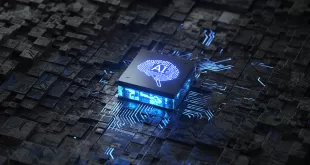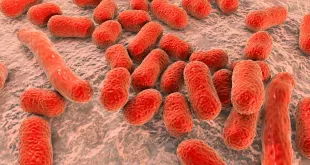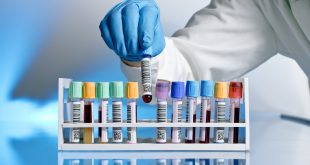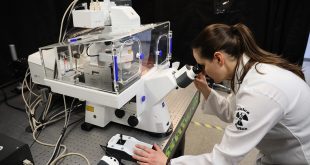By Chuan Gao, Brian Kingwell, Andrej Michalik
This article is about the law, and so the answer to a simple question is inevitably complicated. Some stem cells are patentable, and some are not, and it varies from place to place. What follows is an attempt to be briefly informative about this spectrum of complexities, by looking in particular at a few jurisdictions: Europe, the U.S. and Canada.
European patents are granted centrally by the European Patent Office (EPO) for 38 member states of the European Patent Organisation. Membership is independent of membership to the European Union (EU), although all current EU countries are also members of the European Patent Organisation. The EPO operates under a self-contained legal framework, the European Patent Convention (EPC). To align the EPO’s practice on the patentability of biotechnological inventions with EU legislation, relevant provisions of the EU “Biotech Directive” (98/44/EC) have been adopted as EPC rules, and the EPO Boards of Appeal consider the European Court of Justice’s (CJEU) interpretation of the Biotech Directive persuasive, albeit not legally binding.
The EPO is mandated to grant patents for biotechnological inventions, including patents for biological material isolated from its natural environment or produced by technical means even if it previously occurred in nature. Accordingly, European patents are in general available for cell products, including isolated stem cells; and inventions relating to adult stem cells and non-human embryonic stem cells have not caused controversy. Patenting of inventions involving human embryonic stem (hES) cells proved more problematic in view of EPC rules prohibiting patenting of “the human body, at the various stages of its formation and development” and “uses of human embryos for industrial or commercial purposes”. The former provision precludes patents for human germ cells, human embryos and cells that can develop into a human being. The latter provision was interpreted by the EPO Enlarged Board of Appeal in the WARF decision (G 2/06) as forbidding claims to products which at the filing date could be prepared exclusively by a method necessarily involving the destruction of human embryos. Subsequent decisions confirmed that the point in time at which the destruction took place was irrelevant, and inventions using publicly available hES cell lines initially derived destructively were also excluded (T 2221/10).
There have been a variety of EPO Board and CJEU decisions related to this issue. Most recently, the CJEU in C-364/13 ruled that an unfertilised human ovum whose division and further development had been stimulated by parthenogenesis does not constitute a “human embryo”, due to its lack of inherent capacity to develop into a human being. This motivated the EPO to revise its examination practice. Having identified WO 03/046141 published on 5 June 2003 as the first enabling disclosure of hES cells derived from parthenotes (thus, without destruction of human embryos), the EPO Examining Divisions are prepared to allow hES cell-related inventions filed after this date. However, the EPO Boards of Appeal have not yet endorsed the applicability of the 2003 cut-off date.
Turning to the U.S., a famous quote succinctly describes a patentable invention as “anything under the sun made by man.” In keeping with that sentiment, and the broad statutory definition of a patentable invention, U.S. patents have since the late 1980s consistently issued with claims covering isolated stem cells (including both adult or somatic stem cells and human embryonic stem cells) or induced pluripotent stem cells (iPSC), their compositions, methods of use, methods for generating such stem cells, non-human animals resulting from genetic manipulation involving stem cells, and associated subject matter (such as reagents, media, and scaffolding for culturing stem cells).
A pair of recent U.S. Supreme Court decisions have, however, complicated the issue. The Supreme Court ruled in Prometheus that an invention is not patent-eligible if it is drawn to a judicial exception (i.e., a law of nature, a natural phenomenon, or an abstract idea) without substantially more. In the Myriad decision, the Court ruled that a naturally occurring polynucleotide is not patent-eligible merely because it has been isolated.
In its effort to implement the Myriad decision, the USPTO has established patent examination guidelines that extend the prohibition of patenting natural products from polynucleotides to proteins, cells, and beyond. Under the current guidelines, a nature-based product is not patent-eligible unless (1) it is shown to exhibit characteristics “markedly different” from that of a naturally occurring counterpart, or (2) additional components are present that amount to “significantly more” than the naturally occurring substance. Under these examination guidelines, isolated stem cells that are not per se distinguishable from their naturally occurring counterparts are no longer eligible for patent protection, whereas iPSC claims remain patent-eligible if the resultant stem cells can be characterized as “markedly different” from any naturally occurring cells due to their structural distinctions, such as genetic makeup or protein expression pattern. Similar principles apply to a variety of stem cell compositions that include stem cells and additional components. Relatively unaffected by the recent Supreme Court rulings, claims drawn to methods of using stem cells (such as differentiating or trans-differentiating stem cells), methods of generating stem cells, and associated composition claims (e.g., reagents, culture media, or scaffolding) generally remain patentable in the U.S.
Patent applicants in Canada do not face the new challenges posed in the U.S. by the Myriad and Prometheus decisions. However, the Canadian Intellectual Property Office (CIPO) takes the position that multicellular plants and animals at any stage of development are higher life forms, and are thus not patentable. Totipotent stem cells are taken to have the same potential as fertilized eggs or seeds to develop into an entire organism, and are accordingly considered to be higher life forms that are not patentable subject matter. Embryonic, multipotent and pluripotent stem cells, which are understood not to have the potential to develop into an entire organism, are patentable subject matter. The language used by CIPO to define its exclusion of totipotent stem cells from patentable subject matter echoes aspects of Article 5 of the European Biotech Directive. There are, however, no analogous provisions in the Canadian Patent Act or Rules, and the Biotech Directive is not part of Canadian law. In fact, the administrative policy of CIPO directly contradicts statements made by the Supreme Court of Canada in its leading decision on the patentability of higher life forms, the Harvard Mouse decision, in which one Justice explicitly indicated that a fertilized egg is patentable subject matter. Time, or more particularly jurisprudence, will tell if CIPO’s policy becomes law. In the meantime, claims can successfully be made in Canada to a wide variety of stem cell-related innovations, including new medical uses of stem cells, even where claims to the cells themselves will be refused.
Stem cells are uniquely characterized by their capacity to become many things. Perhaps then it should not be surprising that stem cell patentability around the world is characterized more by diversity than by harmonization. From a practical perspective, this means that patent applications need to be crafted with this evolving legal landscape in mind, ensuring that the full scope and range of every stem cell innovation is fully characterized. This sets the groundwork for obtaining commercially meaningful patent protection in a variety of important jurisdictions, although not always by following the same path. Innovators in the field have persevered in the face of sometimes unexpected obstacles to bring the promise of stem cell technologies ever closer to realization. The same optimistic perseverance may be required of patent applicants as patent law adjusts to accommodate technical and commercial imperatives and thereby serve its intended purpose, as expressed in the U.S. Constitution, of promoting the progress of science and the useful arts.
Chuan Gao is Partner, Kilpatrick Townsend. Brian Kingwell is Partner, Gowling WLG (Canada). Andrej Michalik is European Patent Attorney, De Clercq & Co.
 BioLab Business Magazine Together, we reach farther into the Canadian Science community
BioLab Business Magazine Together, we reach farther into the Canadian Science community





